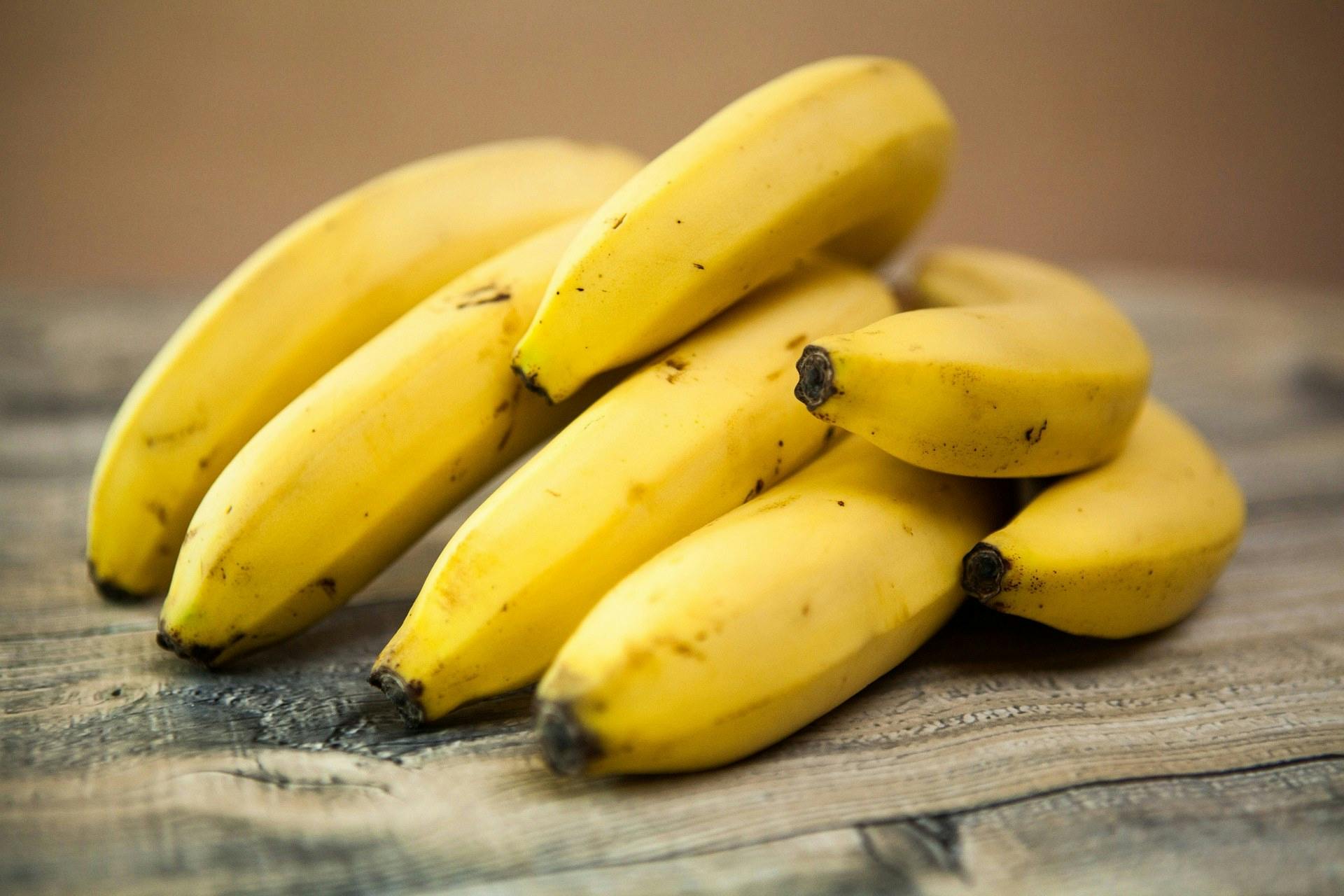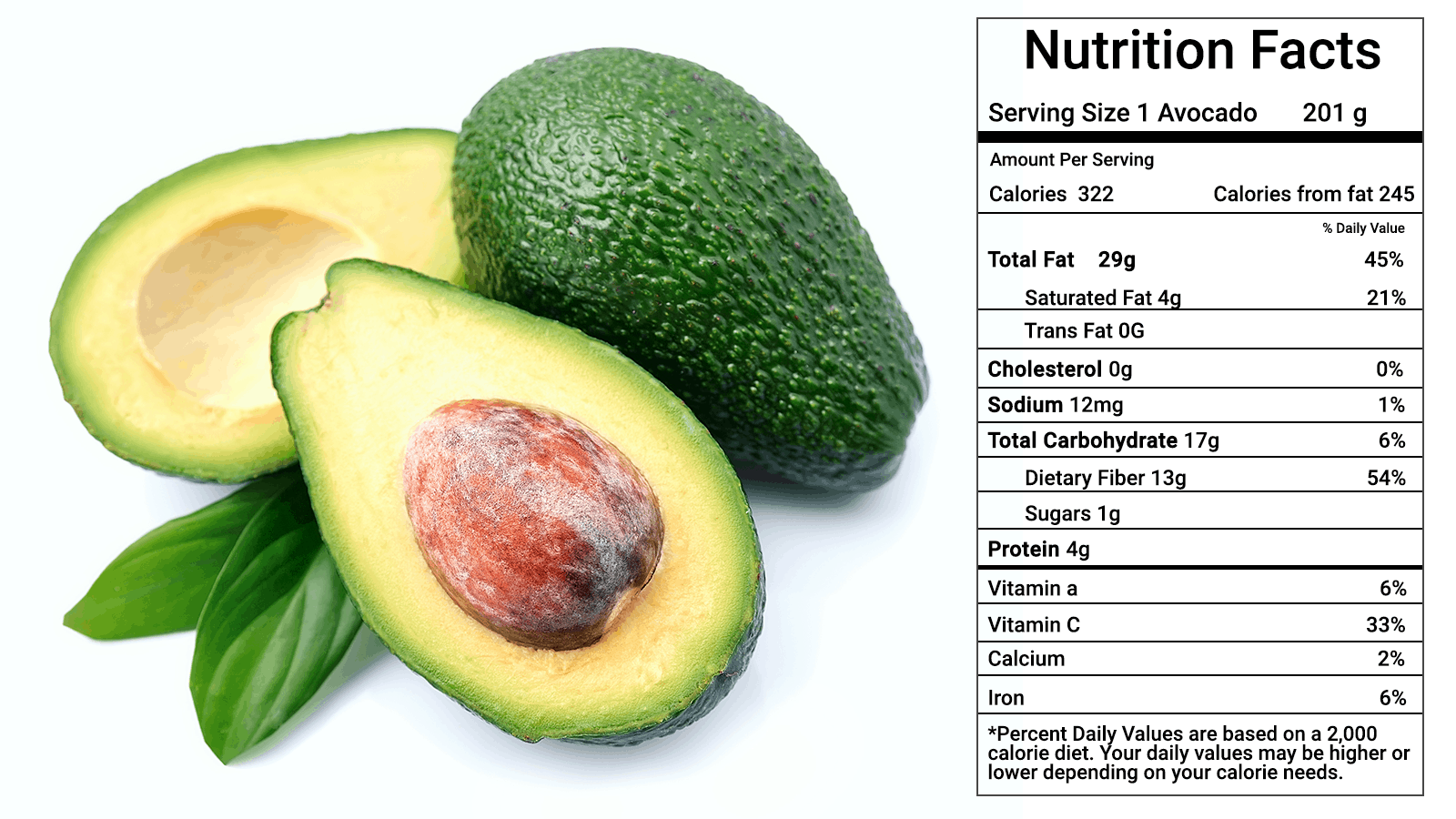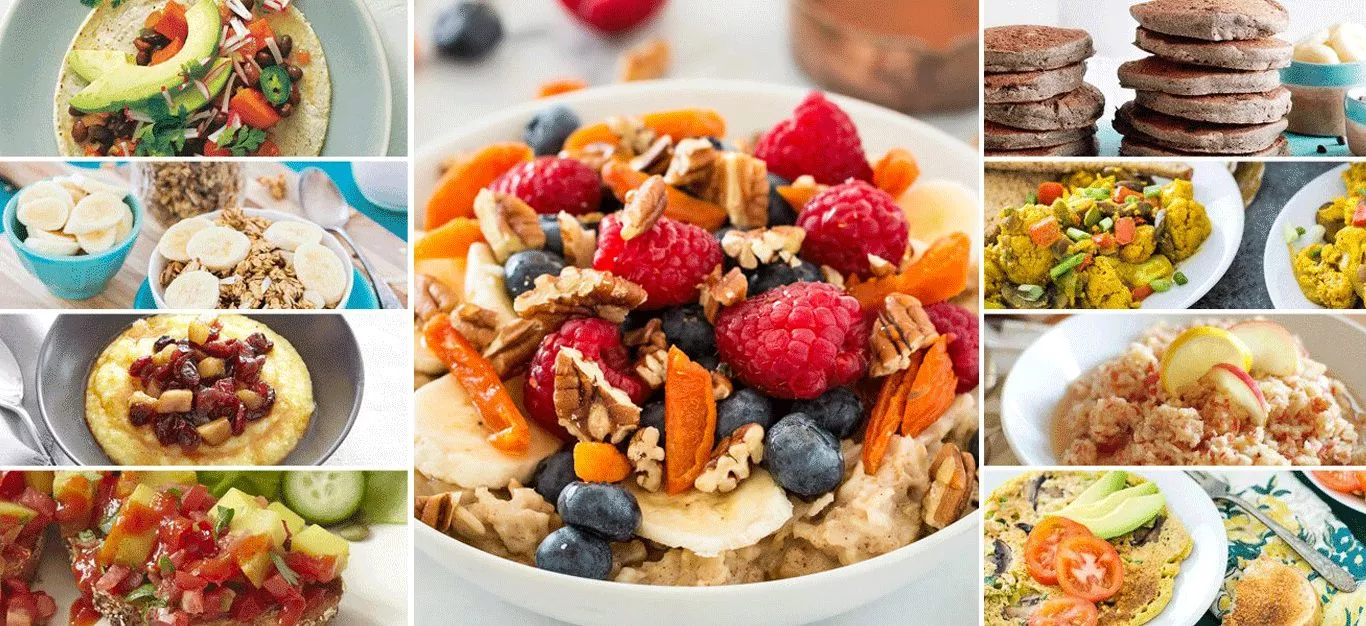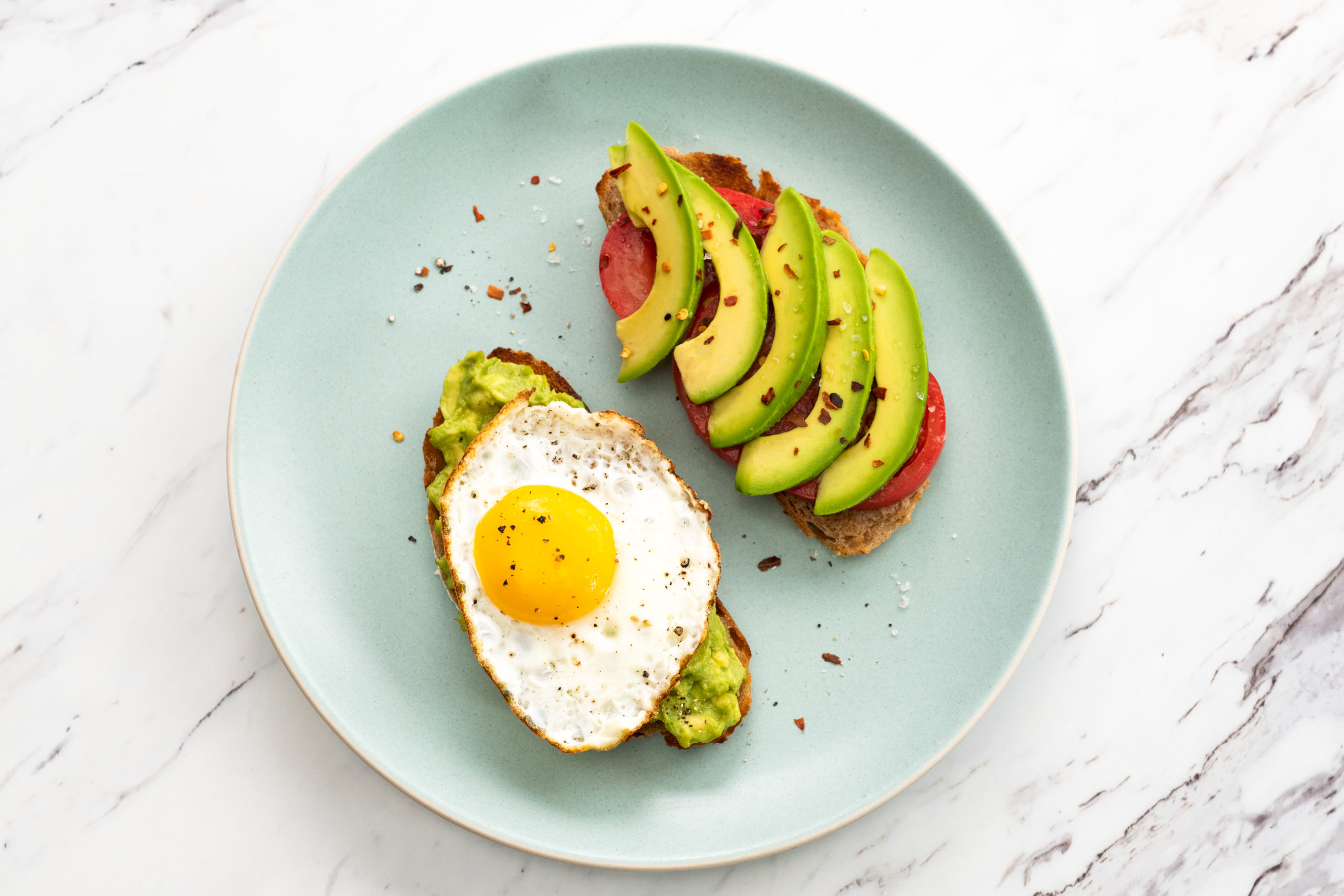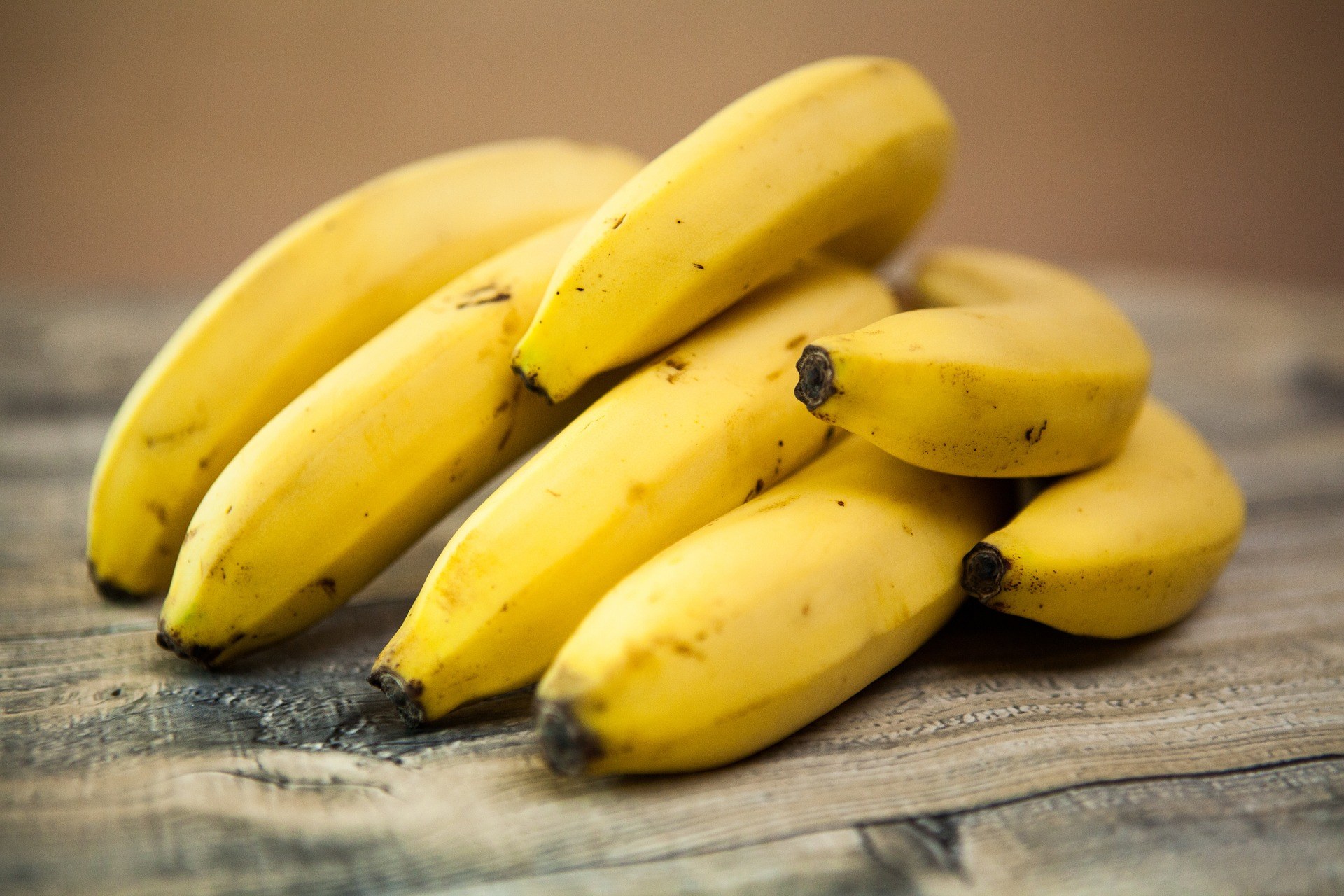
How Many Calories In A Medium Banana? Results Will Shock You
Bananas
If you know that bananas contain a lot of carbohydrates, you might be wondering if it's okay to consume them since you've heard that they aren't the healthiest fruit. Bananas are mostly composed of complex carbs, including resistant starch, which has been shown to have positive effects on digestive health. Bananas are beneficial to your blood pressure and overall health due to the vitamins and potassium that they contain. But how many calories in a medium banana?
The Nutritional Value Of Bananas
118 grams of a banana, which is considered to be of medium size, has 105 calories, 27 grams of carbohydrates, 14.4 grams of sugars, and 1.3 grams of protein. The potassium content of one serving of bananas is 422 milligrams, making them a great source of this mineral. The USDA:1 provides the following information regarding nutrition.
- Calories: 105
- Fat: 0.4g
- Sodium: 1.2mg
- Carbohydrates: 27g
- Fiber: 3.1g
- Sugars: 14.4g
- Protein: 1.3g
Bananas
- Potassium: 422mg
- Vitamin C: 10.3mg
- Magnesium: 31.9mg
Carbs
A medium banana, which is measured as being between 7 and 7 7/8 inches in length, has 27 grams of carbs. These carbs include 3 grams of fiber in addition to a little over 14 grams of sugar that comes from its natural state. Bananas are considered to be two carb options or two carb counts and should be counted as such by diabetics.
Because some of the resistant starch (fiber) in bananas is converted to sugar as the fruit ripens, a banana of the same size that is yellow with brown spots contains more sugar but less fiber than a green banana of the same size. Bananas have a glycemic index that fluctuates anywhere from 48 to 54.
Fats
Bananas
Bananas have a relatively low amount of fat, with a medium-sized banana having less than 0.5 grams of fat. Bananas include trace amounts of the fat-soluble vitamins A and K; therefore, consuming them alongside a source of fat is the key to releasing the full potential of their nutritious value. Peanut butter and bananas are a popular combination. The serving size of two tablespoons of peanut butter provides approximately 10 grams of monounsaturated fat, 3.3 grams of polyunsaturated fat, and just 2.8 grams of saturated fat.
Protein
Bananas contain less than 1.5 grams of protein per medium-sized banana, making them another fruit with relatively low protein content. Again, peanut butter is a common and delicious addition to bananas that adds a substantial amount of plant-based protein (eight grams for every two tablespoons).
Vitamins And Minerals
One banana, which is considered to be of medium size, has approximately 9% of the USDA's recommended daily requirement for the mineral potassium and contains 422 milligrams of potassium.
4 Bananas are rich in a number of essential nutrients, including potassium, vitamin C, folate, magnesium, and choline.
Bananas
Calories
There are 105 calories in one banana that is medium size and weighs 118 grams. How does it stack up against other types of typical fruits? There are around 61 calories in a gala apple of medium size, 72.8 calories in a naval orange, and 129 calories in one cup of seedless red grapes (150g).
Summary
Bananas are an excellent source of potassium as well as carbs, vitamin C, and magnesium. They are also filled with potassium.
Advantages To One's Health
Bananas are a popular fruit that offers several benefits in addition to the potassium boost that they provide after a workout. The following are some of the reasons that eating bananas could be beneficial to your health.
Improves Diabetes Management
Bananas
Bananas that are still green contain a high concentration of resistant starch, which functions similarly to fiber in the digestive process. Green bananas are frequently mashed into pulp or flour and used in many functional food products as well as research investigations due to the numerous health benefits that they offer.
Green banana flour was found to be effective in improving insulin sensitivity, promoting weight loss, and reducing some of the liver and kidney issues associated with diabetes. These are all beneficial for the long-term management of the disease. A review of several studies found that green banana flour was effective.
Fosters Consistency And Regularity
Prebiotics are fermentable fibers that help feed "good bacteria," also known as probiotics, in the digestive tract. Bananas are a good source of prebiotics.
Prebiotics are beneficial to digestion because they encourage the growth of bacteria that aid in the digestion of meals. It is a terrific approach to support gut health, digestion, and regularity by combining bananas with foods that contain live cultures, such as yogurt.
In addition, research into the effects of green bananas on children has revealed that they are beneficial in the treatment of both diarrhea and constipation.
Bananas
Eating bananas is an easy approach to kickstart the digestive system and get things moving in the correct direction.
Helps One Lose Weight
The banana has a poor reputation due to the significant amount of starch it contains; nonetheless, it is a food that supports weight loss objectives because it is low in calories and has a lot of satisfying fiber. Bananas are an excellent method to feel full without overeating because they include approximately three grams of fiber for every one hundred calories.
According to a number of studies, there is a connection between consuming more fiber, cutting back on calories, and experiencing weight loss. According to the findings of a combined study, reducing caloric intake by 10% or increasing fiber consumption by 14 grams per day can result in a weight loss of 4.4 pounds over the course of four months. A choice of 10 bananas for a snack or at breakfast can assist you in achieving and sustaining a healthy body weight.
Brings Down One's Blood Pressure
Bananas
Bananas are an excellent source of potassium, and one medium banana provides approximately 9% of the recommended daily amount for most adults. It is generally known that potassium has the ability to lower blood pressure, and this effect is amplified when potassium is combined with either the DASH diet or an eating plan that is low in salt.
When done on a regular basis, eating bananas can contribute toward meeting the daily potassium requirements necessary to maintain healthy blood pressure and avoid further issues, such as strokes and renal disease. If you choose a banana rather than a salty snack, you'll be doing your entire body a favor.
May Promote The Healing Of Wounds
Banana peels are commonly used in traditional medicine for the healing of wounds due to the antioxidants and anti-inflammatory characteristics that they contain. When applied to mosquito bites or other minor wounds, the interior of banana peels can provide some relief while also acting as a protective barrier that expedites the healing process.
When consumed, bananas provide wound-healing elements such as vitamin C and other antioxidants. This impact may not be entirely supported by modern medicine, but this does not change the fact that bananas provide these nutrients. About 11% of your daily requirements can be met by eating one medium-sized banana. Vitamin C is a necessary building block for collagen, which plays a critical role in maintaining the integrity of the skin.
Bananas
Allergies
Banana allergies are rare but not unheard of in the world of food allergies. There is a condition known as oral allergy syndrome (OAS), which occurs when pollen allergens cross-react with fruits like bananas. This ailment affects some people. There is a connection between banana allergies and allergies to natural rubber latex. According to observational research, between 20 and 50 percent of people who are allergic to latex react negatively to bananas.
The symptoms of an allergy can range from hives and vomiting to dizziness and chest tightness, and in severe cases, anaphylaxis. Even though the connection hasn't been thoroughly researched, some people have had acute pancreatitis as a reaction to bananas, which they are allergic to. 14 Consult an allergist for a thorough examination if you are concerned that you may have an allergy to bananas.
Negative Repercussions
Stomach ache
When increasing their fiber consumption through foods like bananas, some people find that they have constipation, and this is despite the fact that bananas are generally healthy for digestive health. Suppose you aren't used to eating a lot of fiber. In that case, you should gradually increase the amount you consume while also drinking a lot of water to assist your body in acclimating to the greater amount of fiber you are consuming.
Varieties
There are over a thousand different kinds of bananas that can be found in cultivation all over the world. By a wide margin, the most common variety is Musa Cavendish, which controls 45% of the total market for bananas worldwide. 8
There are approximately 100 different kinds of bananas, and one particular section alone contains plantains as a subdivision. Plantains are also regarded as a variant of bananas. At your neighborhood market or at an ethnic grocery store, you could come across bananas of varying lengths and widths. If you want to get the most out of this time-honored fruit, you should try it in its many varied forms.
When It Is Most Optimal
Bananas
You will have plenty of time to let the bananas ripen to your desired level of ripeness if you purchase them while they are still unripe and green. The supermarket is a good place to find fresh bananas at any time of the year.
Keeping Bananas Safe While Storing Them
As they ripen, bananas change colors, going from green to yellow to brown. If you purchase bananas that are still unripe, you can allow them to ripen naturally at room temperature while leaving the peels on. If you want green bananas to ripen faster, you can either put them in a paper bag or put them near other fruits that are already ripe. 11 Do not store bananas in plastic bags because this can cause the bags to retain moisture and cause the bananas to rot.
When the bananas have reached the level of yellowness that you choose, peel them and eat them. If you are unable to consume ripe bananas straight away, you can buy yourself an extra week of time by storing them in the refrigerator. When stored in the refrigerator, the peel of the banana may develop a dark brown or even black color; nevertheless, this does not impair the quality of the banana itself.
Bananas
You can also remove the peel of ripe bananas, then either mash or slice them before placing them in airtight bags and placing them in the freezer. This works really well later on when you want to use it in baking or smoothies. Before bananas are placed in the freezer, neither washing nor blanching them is required, and just make sure you wash your hands before you touch them.
The Way To Prepare It
Bananas can be prepared and eaten in a wide variety of ways. You can receive a healthy dose of sweetness by mixing some sliced bananas into your bowl of plain oats or yogurt. On a slice of whole wheat bread, you might also, as an alternative to jam, put some mashed banana on top of the peanut butter.
Bananas that have been frozen in the freezer make a delicious alternative to ice cream. You can make a wonderful dessert that is also low in calories by topping a frozen banana that has been mashed with a very small amount of dark chocolate and some crushed almonds.
The majority of us are used to eating only the flesh of the banana and disposing of the peel as waste. However, you can eat the peels of bananas, and you could find them utilized in vegan as well as Japanese dishes. Be warned, though, that if you aren't accustomed to eating them, they may be difficult to digest.
